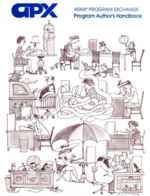

From this meeting, Crane left Atari in 1979 and co-founded Activision, along with Miller, Jim Levy, Bob Whitehead, and Larry Kaplan. After meeting co-worker Alan Miller in a tennis game, Miller told Crane about a plan he had to leave Atari and found a company that would give game designers more recognition. He also worked on the operating system for the Atari 800 computer. Crane started his programming career at Atari, making games for the Atari 2600. He went to college at DeVry Institute of Technology in Phoenix, Arizona and graduated with a Bachelor of Science in Electrical Engineering Technology degree in 1975. Ĭrane originally worked in the field of hardware design for National Semiconductor. Main Screen - altered colour for better dump!įingers was written by Dr T (Emile Tobenfeld) himself while Tunesmith was written by Jim Johnson who also wrote both the Tunesmith and the Fingers manuals.Co-founder of Skyworks Interactive and Audacity Games.ĭavid Patrick Crane (born 1953 in Nappanee, Indiana, United States) is an American video game designer and programmer. Both run in high or medium resolution and both can run within Dr T's MPE (Multi Program Environment).

It's subtitled the Interactive Composition Program and Dr T, says the manual, wrote it to be used by anyone, even those with no musical ability. It produces four monophonic lines of music. Each line is constructed from four parameters - time, pitch, velocity and articulation.
TUNESMITH ATARI PROGRAM SERIES
The parameters are listed in columns called parameter series with the headings Tim, Pit, Vel and S/L (staccato/legato). Line icons labelled 1 to 4 (for each of the lines) step through the columns and their position next to a parameter determines that aspect of the note. There are a number of series control elements which may be put in a column to produce loops and skip parameters. And we haven't mentioned the invisible arithmetic icons yet! If you're starting to feel a little lost, don't worry, you're not the only one! The terminology used throughout the program is self-indulgent at best and deliberately elitist at worst. It's a shame because the program's operation is otherwise not too difficult to understand but it certainly goes against Dr T's aims of providing a program anyone can play. Let's assume we've cut through the jargon and see what happens next.īasically, the Tim column supplies durations which are mapped onto the pitches in the Pit column. (This compositional technique is not new and can be traced back to the Middle Ages.) If you can imagine putting together a piece of music by creating separate pitches and durations you'll have an idea of what the output is like. There are many other ways to manipulate the output. For example, you can adjust the timing of each line with advance/delay parameters and you can manually skip over elements.

You can mute a line, reverse the movement of the line icons, alter MIDI channel and program number, transpose lines and adjust velocities.

Time Adjust alters the speed at which a line plays. Selecting inbetween values creates phase music in which lines drift in and out of time with each other. The affectionately-named series control elements enable you to split a column, link columns, skip elements, make loops and insert rests.Īnd what's a composition program with a random function? Fingers has two types of randomisation.
TUNESMITH ATARI PROGRAM MANUAL
It's nice to know just how random you're going to get and the manual describes what they do (this involves Guassian distribution curves). However, they are easy to invoke.Īnd the result? Well, Fingers can produce melodic material as some of the demo files prove. But they also contain some pieces which can best be described as experimental. It can be used to produce some interesting rhythmic textures.ĭr T is, apparently, very much a boffin in the egghead mould and most of the processes involve numeric rather than music manipulation of the data. Unfortunately, this is by no means guaranteed to produce interesting music. There is, however, at least one - Shift - which lets you preserve the overall length of a series.Ī few music-oriented adjustments would have been useful. With this on if you reduce a Tim value, the following Tim will be increased accordingly to compensate.
TUNESMITH ATARI PROGRAM GENERATOR
It's subtitled The Interactive Algorithmic Phrase Generator and was released a little later than Fingers. One could be inclined to comment that the programmer, Jim Johnson, has learned a few lessons from Fingers. Tunesmith is still highly numeric in nature, however - compare the screens - but apart from a momentary lapse into arithmetic icons it is considerably easier to understand than Fingers. It is far more musically (as opposed to mathematically) oriented, too, and you can load the program and create some themes straight away. Atari tunesmith like program generator#.


 0 kommentar(er)
0 kommentar(er)
